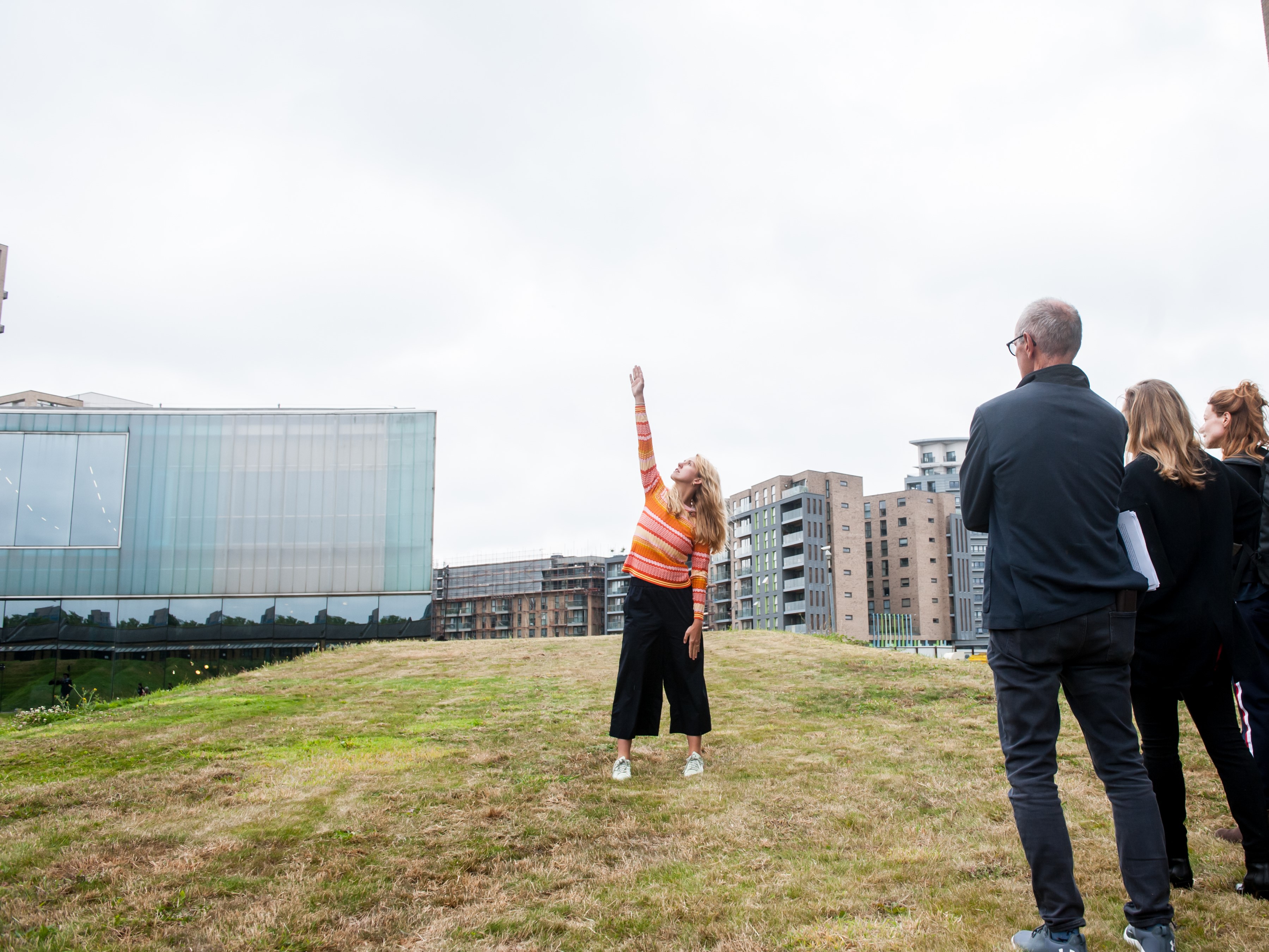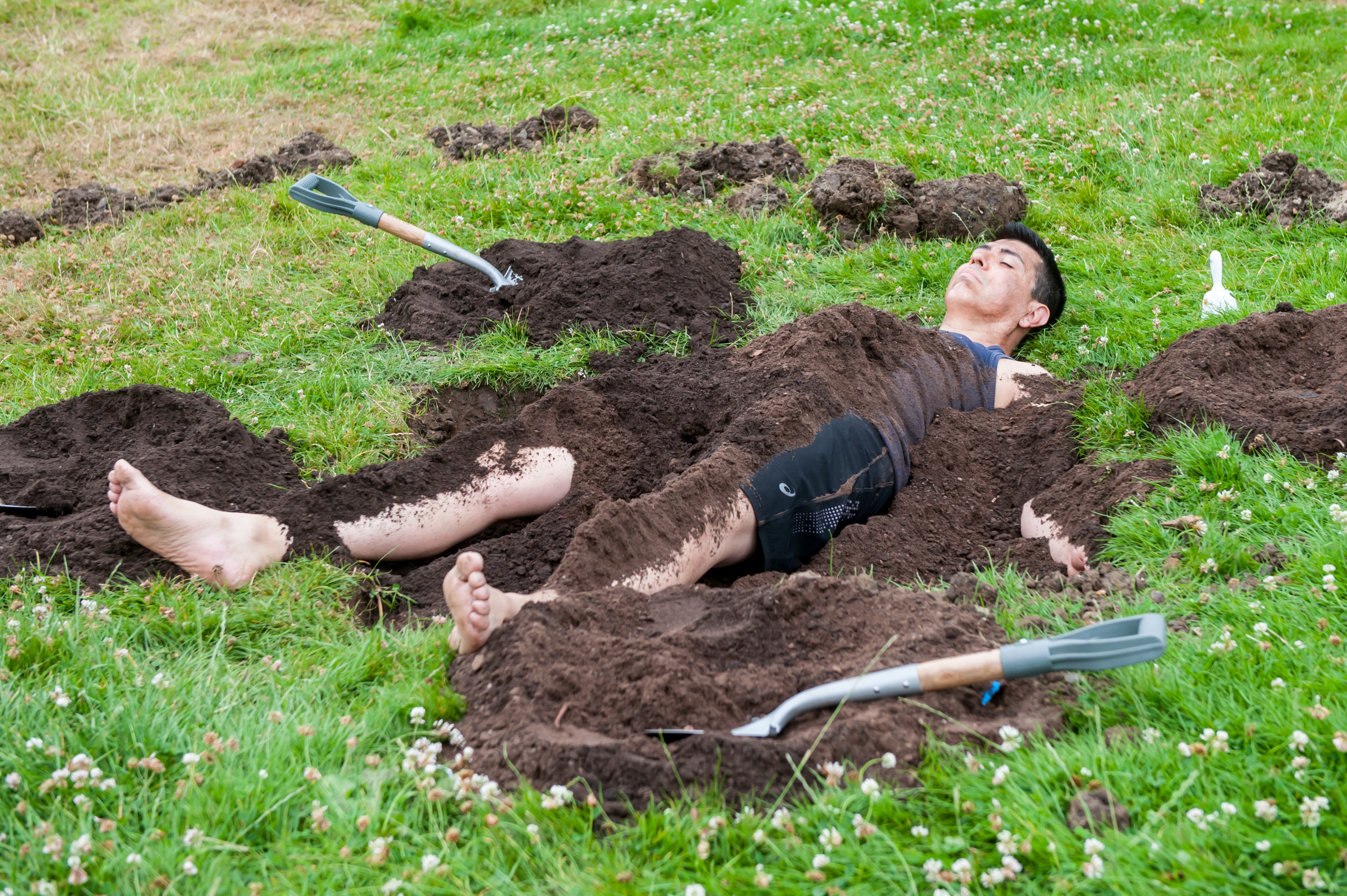Words By Jessie Acton. Performed 19.07.19.
Several journeys begin on the rolling, rain-drenched lawn of the Trinity Laban building, as we are invited to participate in dance artist and Fulbright-Trinity Laban Scholar, Roman Baca’s durational work In-Trench.
Before the performance begins, we are invited to choose between ‘easy’, ‘moderate’, and ‘difficult’ routes, each led by a different performer. Already, it is immersive and multi-stranded. No one audience member can experience In-Trench altogether in its entirety.
We stand in circles and breathe deeply, feeling the ground beneath our feet. We let the gentle voices issuing from surrounding speakers encompass us. It feels like the start of a yoga class. We are invited to become fearless. So the journey begins.
As we follow our performer slowly over the lawn, she begins to intersperse her movements with storytelling. The way she moves contrasts curving, curling gestures with sharp, angular poses. Although her stories are told quietly and calmly, they are brutal, traumatic accounts of war, making for a stark contrast. One moment she is balletic and soothing, the next it is as if she is pointing a rifle.
A myriad of sounds of horrific personal experiences wash over the scene. She reveals her awakening to fear, to mortality, to a life worth living. She speaks on the birth of her first child. Cradling motions are now integrated into the choreography, and its poignancy comes from its contrast with the ungentle realities of military life. She speaks of death, fires a gun, ducks from an explosion. These narratives are reflected through martial movements, told in an unnervingly emotionless tone of voice.

Eventually, the groups converge around a body lying in a makeshift trench surrounded by earth. The performers begin to shovel earth over a male body, before silently handing their tools to audience members who have gathered in a circle around the scene.
Instinctively, people participate, as though taking part in a funeral rite. Participants had their own slightly different approaches; some were tentative whilst others heaped earth onto the In-Trench-ed performer’s chest. Are we burying him alive? Is it a funeral? A mark of respect?Â
Although the mood is sombre, it wasn’t tense or alienating. At one point, one audience member asked another to hold their sandwich so they could pick up the spade, showcasing that people felt united in the piece and not inhibited by its mood.
The breathing of the man being buried becomes exaggerated, the rise and fall of the chest causing earth to spill back off the body and into the trench. This was a great way to bring In-Trench back full circle to the beginning of the piece, when we were invited to appreciate the depth of our breaths and the earth beneath us.
In-Trench ends with the performers opening up their movements skywards, as if releasing a spirit. The phrase ‘I can see the sky’ is repeated and there is an overwhelming sense of catharsis. For all its tale of loss and frustration, in In-Trench we are left with feelings of regeneration; as we see that movement and collaboration can be intensively therapeutic, setting those who suffer the most back on track in the hope they will become themselves again.
Image: Lidia Crisafulli
